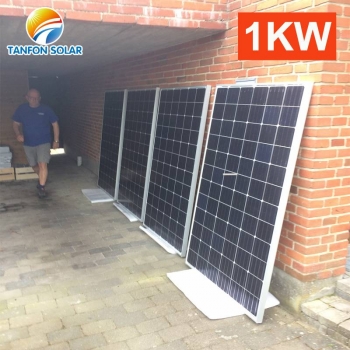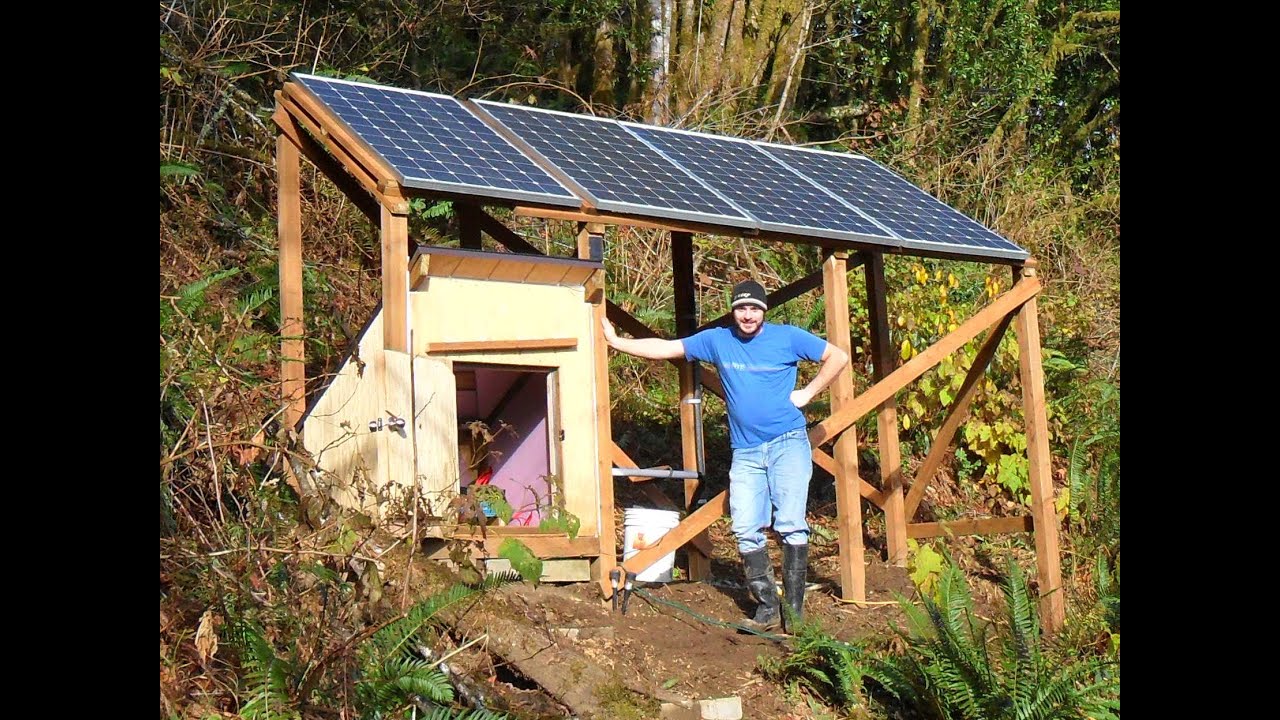A 1000 watt solar panel can power a variety of small electronic devices, including cell phones, laptops, and small appliances. It can also be used to recharge batteries. Solar panels are a clean and renewable source of energy, and are becoming increasingly popular as a way to reduce our dependence on fossil fuels.
A 1000 watt solar panel can power a range of different appliances and devices in your home. Here are just a few examples of what you can power with a 1000 watt solar panel:
• A typical home computer uses between 150 and 250 watts.
So, a 1000 watt solar panel could power 4 computers at once.
• A 27-inch flat screen TV uses about 84 watts. So, a 1000 watt solar panel could power 12 TVs at once.
• A gaming console like the Xbox One uses about 150 watts. So, a 1000 watt solar panel could power 6 Xbox One consoles at once.
• A standard home fridge uses about 725 watts.
So, a 1000 watt solar panel could power a fridge for about 1.5 hours.
As you can see, there are a lot of different things that you can power with a 1000 watt solar panel. If you are looking to use solar power to reduce your energy costs, a 1000 watt solar panel is a great option.
1000watt solar power station
How Much Power Does a 1000 Watt Solar Panel Produce?
Assuming you are asking about a 1000 watt (1 kilowatt) photovoltaic (solar electric) panel under ideal conditions (i.e. full sun at the equator on the summer solstice), it will produce about 1000 watts of direct current (DC) power.
The actual amount of power that a solar panel can produce is affected by a number of factors, including the angle at which the panel is positioned relative to the sun (the steeper the angle, the more power it will produce), the amount of cloud cover (less sun = less power), and the latitude of the location (panels positioned closer to the equator will produce more power than those at higher latitudes).
In terms of the amount of power that a solar panel can generate over the course of a day, that will also depend on the above factors.
A 1 kilowatt panel will generate around 4 kilowatt-hours (kWh) of electricity per day on average. So, in a location with 4 hours of peak sun per day, the panel will generate 1 kWh of power per hour. In a location with 8 hours of peak sun per day, the panel will generate 2 kWh of power per hour.
The power output of a solar panel can also be affected by the temperature. When it’s cooler, a panel will generate more power than when it’s hot. This is because the solar cells that make up the panel are made of semiconductor materials, and their efficiency decreases as the temperature increases.
Finally, it’s important to note that the power output of a solar panel will decrease over time as the cells degrade and become less efficient. Most solar panels have a warranty of 20-25 years, and will typically lose about 10-15% of their power output over that time period.
How Many Watts Do You Need to Power a House With Solar Panels?
Solar panels are becoming increasingly popular as a source of renewable energy. But how much power do you need to generate to power your home?
The average home in the United States uses about 9,400 kilowatt-hours (kWh) of electricity per year.
Solar panels typically have a capacity of around 200 watts, so you would need about 47 solar panels to power a home.
However, the amount of power you need will also depend on how energy-efficient your home is. If your home is highly energy-efficient, you may only need around 30 solar panels.
The average solar panel system costs around $18,000. However, the cost of solar panels has been falling rapidly in recent years, so it’s possible that the cost of powering your home with solar panels may soon be lower than the cost of using traditional sources of energy.
How Many Solar Panels And Batteries Do I Need to Run a Refrigerator?
How many solar panels and batteries do I need to run a refrigerator?
This is a question that is often asked by those who are considering making the switch to solar power. And it’s a good question to ask, because the answer can vary quite a bit depending on a few different factors.
First, let’s start with the solar panels. How many solar panels you’ll need to run a refrigerator will depend on the size of the fridge, the efficiency of the solar panels, and the amount of sunlight that hits your location.
A good rule of thumb is that you’ll need about one solar panel for every 100 watts of power that your fridge uses.
So, for example, if you have a fridge that uses 500 watts, you’ll need at least five solar panels.
Now, let’s talk about batteries. The number of batteries you’ll need to run a fridge will depend on a few different factors as well, including the size of the fridge, the efficiency of the solar panels, the amount of sunlight that hits your location, and the amount of time you want your fridge to run without sunlight.
As a general rule of thumb, you’ll need about one battery for every two solar panels. So, if you have five solar panels, you’ll need at least three batteries.
Keep in mind that these are just general guidelines.
The actual number of solar panels and batteries you’ll need to run a fridge will vary depending on your specific situation.
If you’re considering making the switch to solar power, be sure to do your research and figure out exactly how many solar panels and batteries you’ll need to run your fridge.
How Much Solar Power Do I Need to Run Lights?
Assuming you would like to know how to power lights using only solar energy, the amount of solar power you need depends on the number and wattage of the lights, the hours of sunlight, and the efficiency of the solar panels.
For example, if you have four 60-watt lightbulbs and six hours of sunlight, you would need 14 watts of solar power. However, if you live in an area with less sunlight, you would need more solar panels to generate the same amount of power.
In addition, solar panels have different wattage ratings and efficiencies, so you would need to take those factors into account as well.
Overall, the amount of solar power you need to run lights can vary depending on a number of factors. For more specific advice, it is best to consult with a solar energy expert.

Credit: www.witkeypowerbank.com
What Can a 100 Watt Solar Panel Power
A 100 watt solar panel can power a variety of devices, including lights, phones, laptops, and small appliances. Here are some examples of how much power different devices use and how long a 100 watt solar panel can power them:
-A standard light bulb uses about 60 watts of power.
A 100 watt solar panel can power a light bulb for about 1.5 hours.
-A smartphone uses about 5 watts of power. A 100 watt solar panel can power a smartphone for about 20 hours.
-A laptop uses about 60 watts of power. A 100 watt solar panel can power a laptop for about 1.5 hours.
-A small appliance, like a coffee maker, uses about 1000 watts of power.
A 100 watt solar panel can power a small appliance for about 10 minutes.
What Can 800 Watt Solar Panel Power
If you’re considering solar power for your home, you may be wondering how much power you can generate with an 800 watt solar panel. The answer depends on a few factors, including the amount of sunlight you get and the efficiency of your solar panel.
In general, you can expect to generate about 800 watts of power per hour of sunlight.
So, if you live in an area that gets 4 hours of sunlight per day, you can generate 3,200 watts of power per day.
Of course, solar panels are not 100% efficient, so you won’t be able to generate that much power all the time. The average solar panel has an efficiency of about 15-20%.
This means that, of the sunlight that hits the panel, only 15-20% of it is converted into electricity.
So, if you take that 4 hours of sunlight per day and multiply it by 0.15-0.2, you get an estimated range of 600-800 watts of power that you can generate per day with an 800 watt solar panel.
Of course, this is just an estimate.
The actual amount of power you generate will depend on a number of factors, including the efficiency of your solar panel, the amount of sunlight you get, and the angle of your panel to the sun.
If you’re considering solar power for your home, an 800 watt solar panel is a great option. With a little bit of sunlight, you can generate a significant amount of power to run your home.
1000 Watt Solar Panel With Battery Price
A lot of people are interested in solar power these days, and for good reason. Solar power is a clean and renewable source of energy that can help save you money on your electric bill. And, with the advances in solar technology, solar panels are becoming more and more efficient, making them a great investment for your home or business.
One of the most popular solar panel options on the market today is the 1000 watt solar panel with battery. This type of solar panel is a great choice for those who want to get the most out of their solar investment.
The 1000 watt solar panel with battery is one of the most powerful solar panels on the market.
It is able to generate 1000 watts of power, making it ideal for powering larger homes or businesses. And, with the addition of a battery, you can store solar power for use at night or during a power outage.
The price of a 1000 watt solar panel with battery can vary depending on a number of factors, such as the brand, the quality of the panels, and where you purchase them.
However, you can expect to pay around $1000 for a high-quality solar panel with battery.
If you are interested in investing in solar power, then a 1000 watt solar panel with battery is a great option to consider. With its high power output and ability to store solar power, it is a great choice for those who want to make the most of their solar investment.
Conclusion
A 1000 watt solar panel can power a range of devices and appliances, from small electronics to larger appliances like refrigerators. The amount of power that a solar panel can generate depends on a number of factors, including the size of the panel, the amount of sunlight it receives, and the efficiency of the panel.
